Growing up, my mom’s Korean cold soybean noodle salad was the ultimate comfort food on a hot summer day. The nutty, savory glass noodles cooled us down while the spicy, tangy dressing warmed us up – it was the best of both worlds!
As an adult living far from home, I’ve craved those tasty noodles but struggled to recreate the complex flavors from memory. After many failed attempts, I finally asked my mom for her official recipe so I could share it with the Food and Meal community. I want to transport you to my Korean childhood with each tangy, sweet, spicy bite!
This versatile noodle dish comes together quickly but packs a serious punch of flavor. With a rich, umami soybean and sesame dressing blanketing chewy sweet potato noodles and crisp veggies, it’s nutritious and delicious. I add heat with a hit of gochugaru chili flakes, but you can adjust it to your tastes. Toppings like kimchi, herbs and toasted seaweed make it even more texturally dynamic.
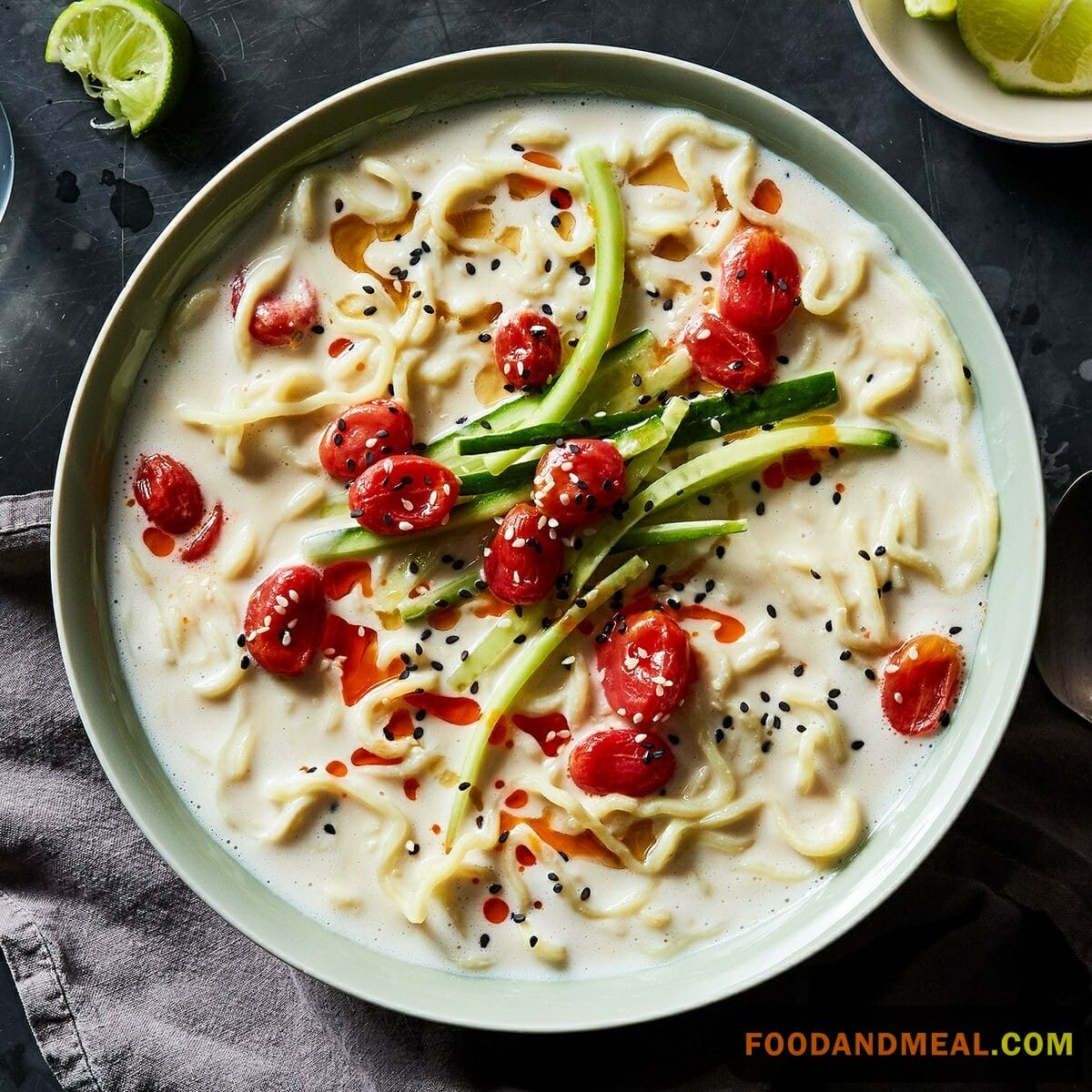
Korean Cold Soybean Noodles Recipe
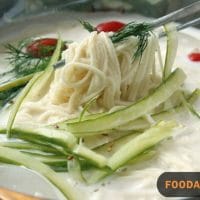
Korean Cold Soybean Noodles Recipe
Equipment
Ingredients
- 1 cup dried soybeans
- 8 ounces wheat flour noodles (somyeon)
- 2 teaspoons salt
- 2 tablespoons toasted sesame seeds
- 3 tablespoons pine nuts (optional)
- 3 or 4 ice cubes or 1⁄2 cup crushed ice
- Matchstick-sliced cucumbers, for garnish (optional)
- Sliced tomatoes, for garnish (optional)
- Additional sesame seeds, pine nuts, or peanuts, for garnish (optional)
Instructions
- Soak the soybeans overnight in a bowl of cold water or in hot water for 1 to 2 hours. Drain.
- Put the soybeans in a medium saucepan and cover with water. Bring to a boil over high heat. Reduce the heat to medium and simmer vigorously for about 20 minutes.
- Meanwhile, cook the noodles according to the package directions. Rinse them in cold water.
- Drain the soybeans and rinse them under cold water, rubbing them between your hands to remove the skins.
- In a blender, purėe the cooked soybeans, salt, sesame seeds, and pine nuts, if using, with about 4 cups water. You might have to do this in a few batches. When the mixture becomes smooth, add 3 or 4 ice cubes or 1⁄2 cup crushed ice and purėe until smooth and frothy. If you want a smoother texture, pass the mixture through a sieve and discard the solids.
- To serve, put a mound of noodles in each bowl, cover with soybean sauce, and top with any of the garnishes (if desired). You can also add a couple ice cubes to each bowl if you like it very cold.
Video
Notes
Nutrition
© Food And Meal
This website provides approximate nutrition information for convenience and as a courtesy only. Nutrition data is gathered primarily from the Spoonacular Database, whenever available, or otherwise other online calculators.
Korean Cold Soybean Noodles Cooking Tips
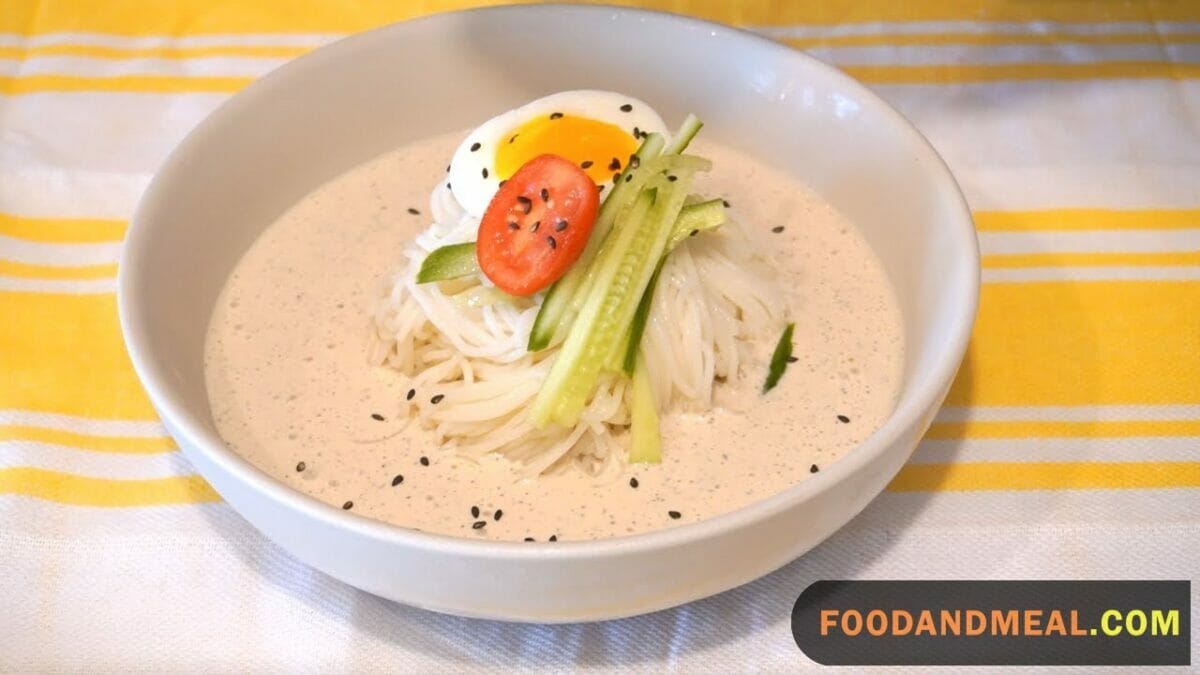
When I first attempted my mom’s cold soybean noodle salad recipe, I made some rookie mistakes that resulted in a bland, mushy mess. After seeking her expert guidance, I want to share a few pro cooking tips so your noodles turn out perfectly tangy, nutty and toothsome every time.
First, don’t overlook properly preparing the sweet potato noodles. Rinsing them under cold water prevents sticking and washes away excess starch for an ideal tender-chewy texture. I learned this the hard way when my first batch turned gummy!
Next, getting the dressing right is key. Whisk together the soybean paste, sesame oil, rice vinegar and sugar until emulsified and smooth. This builds a rich, complex flavor base before spiking it with spicy gochugaru flakes to taste. I admit, my early dressings split into sad oily puddles – rookie mistake!
Finally, don’t drown the noodles in dressing. Gently tossing them together retains the delightful toothsome bite. Resist the urge to overmix. Allowing ingredients to mingle on their own creates lovely variations in flavor and texture in each bite.
Korean Cold Soybean Noodles Serving Suggestions
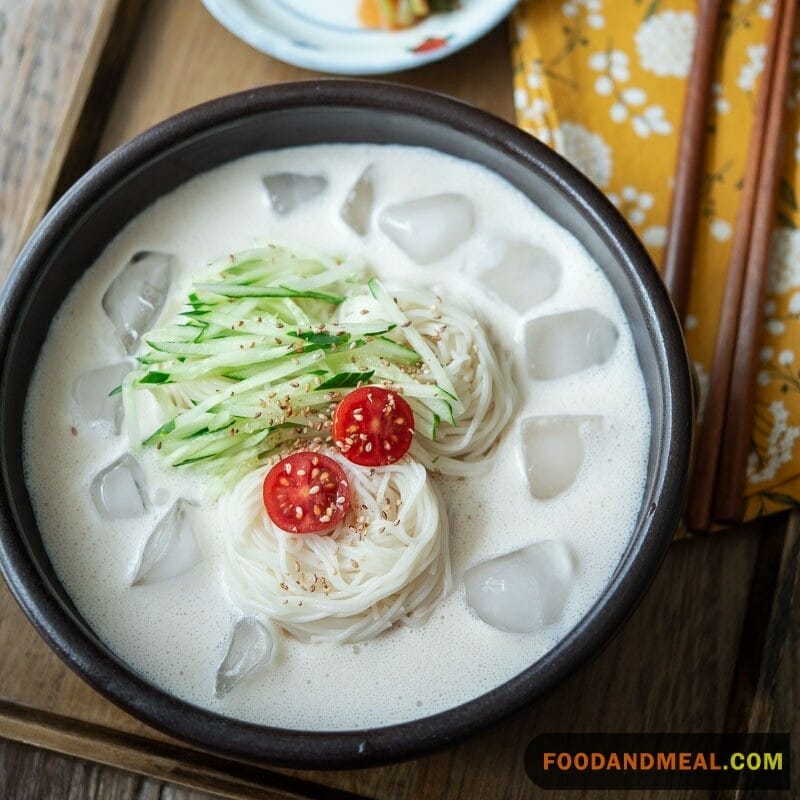
Korean Cold Soybean Noodles offer a refreshing and flavorful experience, and there are various serving suggestions to elevate your dining experience. Pair these delightful noodles with natto for added texture and protein, or enjoy them alongside gyoza for a delightful combination of flavors. For a hint of heat, add a dollop of wasabi, or satisfy your cravings with the satisfying crunch of karaage (Japanese fried chicken). Incorporate the richness of sashimi slices to complement the soybean noodles, and consider a glass of soy milk or oat milk for a refreshing beverage. Experiment with diverse noodle dishes by serving them alongside yakisoba, and dip them in mentsuyu for an extra burst of flavor. Complete your meal with a subtly sweet and nutty rice milk. Mix and match these serving suggestions to create a customized and delicious dining experience with Korean Cold Soybean Noodles.
FAQs on Korean Cold Soybean Noodles
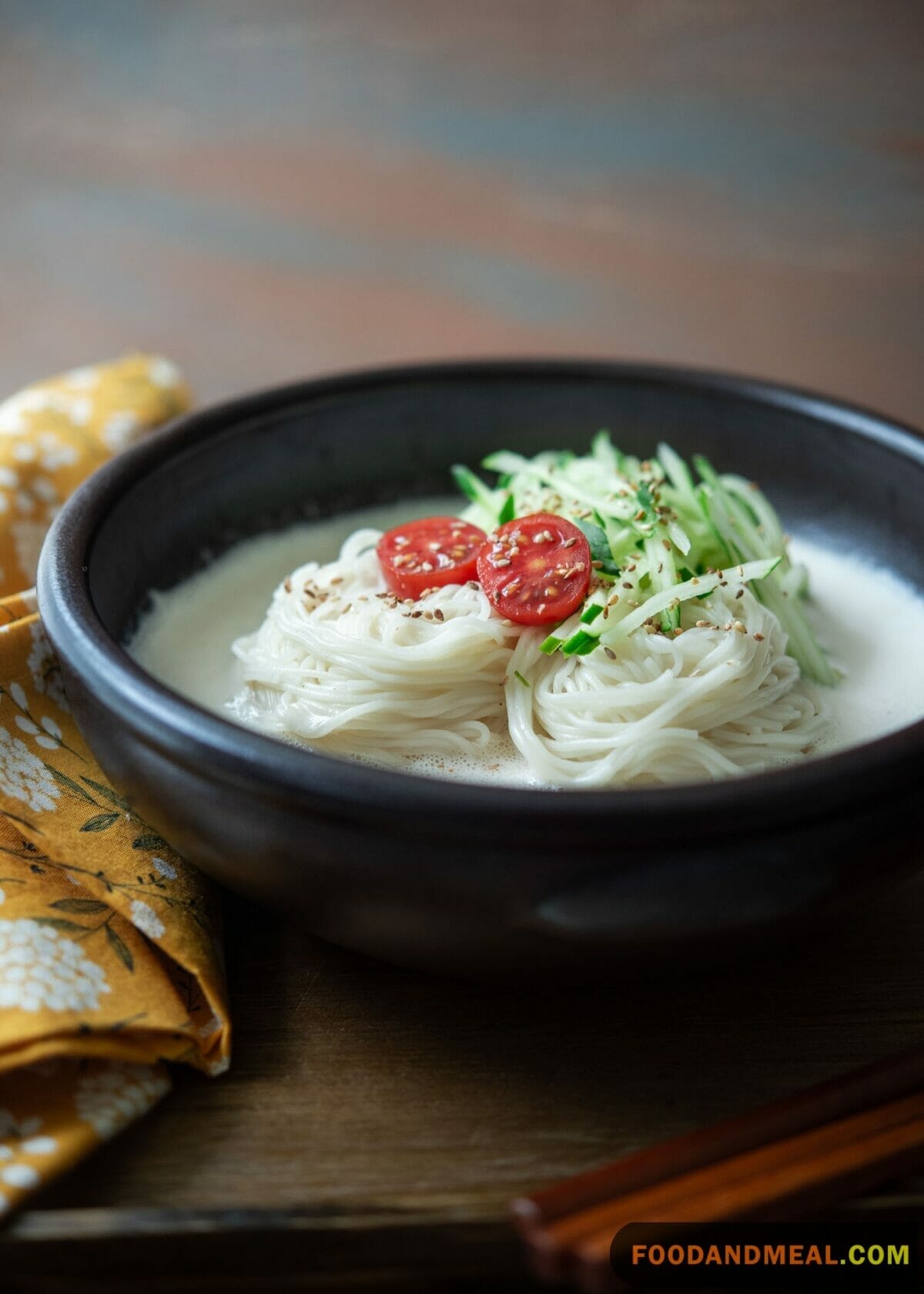
- Are spicy cold noodles good? Absolutely! Spicy cold noodles are delicious and offer a refreshing and flavorful experience, especially in warm weather.
- What are Korean cold noodles called? Korean cold noodles are commonly known as “Naengmyeon.” Spicy variations may specifically be referred to as “Bibim Naengmyeon.”
- How do you eat Korean spicy cold noodles? To enjoy Korean spicy cold noodles, mix the noodles thoroughly with the spicy sauce before eating. The dish is typically slurped, allowing you to savor the combination of textures and temperatures.
- What are Korean spicy noodles called? Korean spicy noodles are often referred to as “Bibim Guksu” or “Bibim Naengmyeon.”
- Can I use store-bought broth for the recipe? While you can, I’d always advocate for a homemade broth. It grants you control over the flavor profile, ensuring authenticity.
- Is there a vegetarian variant? Absolutely! Skip any fish-based ingredients and amplify the veggies. Mushrooms can add a lovely umami touch to the broth.
- How long can the dish be stored? Ideally, consume it fresh. But if you must, refrigerate separately — broth in one container, and noodles in another, for up to 2 days. Warm the noodles slightly before serving with the chilled broth.
- Can I use other types of noodles? While the traditional recipe calls for specific noodles, feel free to experiment. Just ensure your choice retains a nice chew when served cold.
- The flavor feels too bland. How do I adjust? A dash of soy sauce or a pinch of salt can enhance the broth. For heat, a touch of Korean chili paste can do wonders!
Conclusion
I hope this spicy cold noodle salad will become one of your go-to hot weather recipes, just like it is for my family. The complex flavors and variety of textures make it so craveable, while still being light and refreshing enough for a sweltering day.
As I continue developing recipes and writing for Food and Meal, I want to share more dishes from my heritage that offer a taste of home along with nourishment. Playing with new flavor combinations and learning from my mistakes in the kitchen has helped me gain confidence to experiment more. My next attempt will be recreating my mom’s kimchi stew!
If you try this spicy cold soybean noodle salad, I’d love to hear your tweaks and serving suggestions in the comments below. The Food and Meal community has given me so much inspiration. I hope sharing a small taste of my Korean childhood can spark more culinary creativity as well.
Hi! I'm Nazia of ‘Nazia Cooks’, a self-taught baker and cook residing in Chennai. Rooted in the rich South Indian culinary landscape, my palate has expanded to embrace global flavors. I revel in crafting fusion dishes, melding traditions to birth unique tastes.




